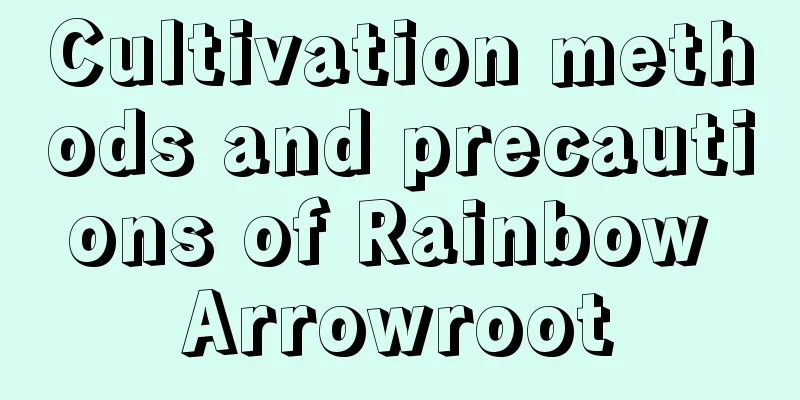How to grow ginseng?

|
Ginseng is known as the "king of herbs" and is a very valuable medicinal plant. In my country, the history of commercial cultivation of ginseng can be traced back to the Ming Dynasty, and it is mainly distributed in the northeastern regions such as Jilin and Liaoning. This plant has relatively strict requirements for growing conditions and is more suitable for growing in a temperate continental climate. So how do you grow ginseng? 1. Soil Ginseng prefers sandy soil that is rich in humus, deep, loose and well-drained. Forest humus is the best choice. The soil pH should be neutral or slightly acidic, while alkaline soil is not suitable for planting. Ginseng has strict water requirements, requiring sufficient water but not being too moist. Too high or too low soil humidity will affect the growth of ginseng. The appropriate soil humidity should be maintained at 40%-50%. 2. Lighting Ginseng is a shade-loving plant that prefers diffuse light rather than direct sunlight. Too much light will cause the plant to be short, and the leaves will become thick and yellow; insufficient light will make the plant slender, and the leaves will become thin and too green. Therefore, shading measures should be taken when planting ginseng to adjust the light intensity and utilize scattered light and refracted light. 3. Temperature Ginseng is not resistant to high temperatures, but has strong cold resistance. During the growing period, the most suitable average temperature is 15-20℃. When the temperature exceeds 30℃ or is below 10℃, ginseng will enter a dormant state. Even in the severe cold of -40℃, ginseng can survive the winter safely. When the ground temperature rises above 10℃ in spring, ginseng begins to sprout and grow, but frost damage caused by temperature fluctuations in early spring must be avoided. 4. Fertilizer Ginseng likes both organic and inorganic fertilizers , but uncomposted fertilizers can cause root burn. The base fertilizer should be applied in the previous year or evenly spread in the bed soil after it is fully decomposed before planting. Top dressing should be done after sufficient base fertilizer has been applied in the year of sowing or transplanting. Use decomposed pig manure, chicken manure, bean cake, perilla seed , etc., apply the fertilizer in furrows between rows and then cover with soil. 5. Soil disinfection The soil should be disinfected before sowing. Use disinfectants according to the recommended plan and mix them evenly with the bed soil to avoid increasing the dosage at will. 6. Seeding amount and planting density The appropriate sowing amount per square meter is about 40 grams. Avoid over-sowing which will result in small seedlings and affect the final yield and quality. When transplanting, the row spacing should be 20-25 cm, the plant spacing should be 8-10 cm, and it is more appropriate to plant 50-60 seedlings per square meter. Overly dense planting can easily lead to the occurrence and spread of diseases, and in severe cases may cause large areas of seedling death. Therefore, sparse sowing and planting is recommended. The above is an introduction to the key points of ginseng cultivation. Through careful soil management, light control, temperature regulation, reasonable fertilization and appropriate sowing density, the yield and quality of ginseng can be effectively improved.
|
<<: How to grow green radish hydroponically to make it grow more vigorously?
>>: How to grow the rubber tree more vigorously?
Recommend
Cultivation methods and precautions of sweet alyssum
Sweet sweet grass is particularly suitable for po...
When is the best season to plant celery?
Celery Planting Season and Time Celery can be pla...
What to do if roses don't bloom
1. Reduce watering Reason: If the environment is ...
What to do if the leaves of black leaf Guanyin lotus are rotten
Why does this happen? There may be many different...
Honeysuckle cutting method and time cutting propagation technology with high survival rate
Honeysuckle is a medicinal material that has the ...
When is the best time to sow rice in Northeast China?
Northeast rice planting time Northeast rice is an...
Where is the mango tree suitable for growing? What are the growing environments and conditions?
Where do mango trees grow? Mango trees are suitab...
How long is the growth cycle of eggplant?
Eggplant growth cycle Eggplant is suitable for cu...
Is Black Mage suitable for beginners?
Is Black Mage suitable for beginners? It should b...
When "Baby's breath" is made into dried flowers, it is absolutely beautiful! Simple and practical, try it now
It is actually very simple to make dried flowers,...
How long does it take for fiddle-leaf fig to adapt to the pot?
Time for Ficus microcarpa to adapt to the pot It ...
Should I use a large or small pot for fragrant wood?
Should I use a large or small pot for fragrant wo...
Rose grafting method
1. Grafting time Rose grafting should be done in ...
How to plant coffee? Planting methods and techniques
Coffee growing environment requirements Coffee us...
How to care for cymbidium orchids
As the New Year approaches, many potted flowers a...









